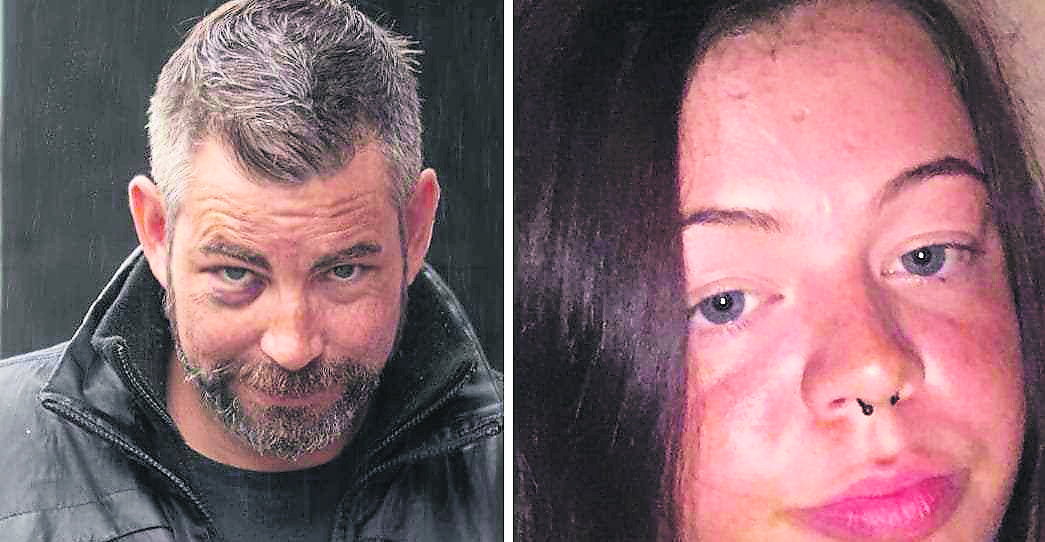by Eoin Reynolds
A jury has been warned that it could be dangerous to act on the testimony of a man who has blamed his former lover and co-accused for the murder of a 66-year-old whose body was put over Ireland’s tallest cliffs at Sliabh Liag.
Mr Justice Paul McDermott is delivering his charge to the jury of seven women and five men in the Central Criminal Court trial of Alan Vial (39) and Nikita Burns (23). Both deny the murder of Robert ‘Robin’ Wilkin in Donegal on June 25, 2023.
It is the prosecution case that Mr Vial and Ms Burns were part of a joint enterprise to cause serious harm to Mr Wilkin before putting him over the cliffs. The Irish Coastguard found Mr Wilkin’s body in the sea near Sliabh Liag eight days after it is alleged Mr Wilkin’s head was beaten in with a rock.
Mr Vial took the stand during the trial to say that he had been out drinking with Ms Burns and Mr Wilkin in various pubs in Dunkineely. They were heading home after closing time with Mr Wilkin driving, Ms Burns in the front passenger seat and Mr Vial in the back when a row broke out and Mr Wilkin stopped the car.
Mr Vial said the deceased turned in his seat and punched him in the head multiple times before Mr Vial grabbed the pensioner’s wrists to prevent further blows. While they grappled, he said Ms Burns appeared at the front passenger door and twice struck Mr Wilkin on the back of the head with a rock, causing him to stop breathing.
Mr Vial said he drove to Sliabh Liag where Ms Burns helped him to lift the body over a fence and drop it to the other side, where it “rolled from there off the edge of the cliff”.
However, in her statement to gardai, Ms Burns denied striking Mr Wilkin and described a fight in which her co-accused hit the deceased six or seven times with a rock. She also denied helping to put the body over the cliff but accepted that she had helped to clean Mr Wilkin’s blood from the car.
Mr Justice McDermott told the jury that Ms Burns’ statements to gardai or others outside court cannot be used as evidence against Mr Vial. However, Mr Vial’s court testimony, which was subject to cross examination by Ms Burns’ lawyers, can be used as evidence against her.
The judge added: “You have to proceed with caution when considering his evidence in respect of his implication of Ms Burns, because there is a danger that a co-accused, in his position, on the same charge of murder, may fabricate evidence or falsely implicate their co-accused.”
While the jury can rely on Mr Vial’s testimony if they accept it, Mr Justice McDermott said it is “dangerous to act on it” where it is uncorroborated by other evidence.
“You are not precluded from acting on it,” he said, “but you must bear in mind the warning I have given you in respect of doing so.”
Mr Vial (39) of Drumanoo Head, Killybegs, Co Donegal and Ms Burns (23) of Carrick, Co Donegal have both pleaded not (NOT) guilty to Mr Wilkin’s murder.
Mr Justice McDermott told the jury that where the prosecution alleges a joint enterprise murder, it must prove that both accused entered a tacit or explicit agreement to kill or cause serious injury to Mr Wilkin. If they both acted in pursuit of that joint goal, the prosecution does not have to establish which of the two inflicted the fatal blows.
However, if the prosecution has failed to prove the joint enterprise beyond a reasonable doubt, the jury must consider each accused’s individual responsibility. In particular, they must consider whether the prosecution has proved a beyond reasonable doubt whether either accused killed Mr Wilkin with the necessary intent for murder.
The judge further told the jury that in relation to each accused, they can return a verdict of not guilty of murder but guilty of impeding the apprehension of another person for murder. That would arise, he said, in a situation where they were satisfied that one of the accused is guilty of murder but the case against the other is unproven.
Mr Vial, he said, had accepted that he helped to put the body over the cliff and to clean the car in an attempt to protect his co-accused.
Ms Burns, on the other hand, has pleaded guilty to impeding the apprehension or prosecution of Mr Vial by cleaning the car, he said. The alternative verdict, the judge said, arises where the jury concludes that one or other is not guilty of murder.
Mr Vial accepted that during 20 hours of interviews with gardai he told multiple lies, including that Mr Wilkin was still alive and breathing when they left him near the cliff edge, but not over the edge. Mr Justice McDermott said the prosecution relies on those and other alleged lies as evidence of Mr Vial’s guilt. However, Mr Justice McDermott warned the jury that people sometimes lie, not to cover up guilt, but out of shame, panic, shock or a desire to protect others from prosecution.
Before accepting lies as evidence of guilt, the jury must be satisfied that they were told due to a “realisation of guilt and a fear of the truth”, the judge said.
Mr Justice McDermott has begun a reprise of the evidence heard during the trial, which began on January 17. The jury is not available to sit tomorrow or Monday and will return next Tuesday.










